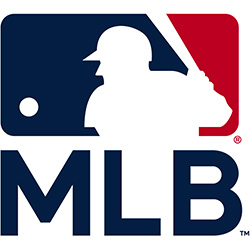 We will inevitably see a delay to spring training and the MLB regular season after weekend negotiations between MLB owners and the players association ended with no deal.
We will inevitably see a delay to spring training and the MLB regular season after weekend negotiations between MLB owners and the players association ended with no deal.
A weekend meeting saw a new proposal from MLB presented to the players, representing some incremental movement toward a deal. The two sides are far apart on some major issues, however, and with full squads set to report in a week, we’re looking at the fairly inevitable likelihood spring training will be delayed, along with the regular season. MLB hasn’t made any announcement to that effect, however. MLB Commissioner Rob Manfred has said that spring training will need to run four weeks, however, so it’s not clear whether spring training would be merely delayed or shortened. Right now spring-training games run a few days over four weeks.
So what’s most likely? Spring-training games will be delayed, and more negotiations are not yet scheduled—which means this week’s date of Feb. 15 when pitchers and catchers are set to report will be missed. (That Feb. 15 date is a bit of a red herring; full squads aren’t due to report until Feb. 21.) The players association was presented with a new set of drop-dead rates needed to start the season on March 31.
While we’re seeing both sides hint about the level of progress made in talks, we’re also seeing some reports of the strange side issues now being introduced to the proceedings. One such instance requires a little background.
When MLB and MiLB officials were negotiating contraction of the minor leagues, one contentious issue involved the reduction of MiLB players under contract. At that time MLB negotiators proposed trimming the number of players under contract to 150, not counting foreign players. That proposal actually engendered more debate on the MLB side than the MiLB side and was not a small market vs. big market issue: most MLB teams averaged 180 or so MiLB players under contract, with a range of teams from the Cincinnati Reds to the New York Yankees averaging even higher totals. The MLBPA opposed a cut to 150 teams, and with several MLB owners opposing it internally as well, MLB settled at something approaching the status quo with a limit of 180 MiLB players under contract, though teams do have the ability to exceed that number in the offseason.
MLB negotiators are coming back to the CBA negotiations and asking the players association to revisit the issue and give the commissioners office the power to reduce in MiLB levels from 180 to 150 players. There is a group of MLB owners who really don’t see player development as being a cornerstone of their operating philosophy, and the same MLB owners who pushed for a reduction in MiLB players under contract are also major players in the CBA negotiations. In terms of trimming MiLB contracts, we are not talking huge numbers in an $11-billion industry. But professional baseball is unique in player development; other major-league sports, like football and basketball, spend minimally on player development and leave it up to the colleges or junior-hockey programs. Baseball’s player-development system in the last century was a prime reason why baseball became America’s Pastime: You could be a Billings Mustangs or Cedar Rapids Kernels fan and have a decent chance at seeing an MLB star in the making. Developing players is seen as a burden for some owners who have little interest in something that doesn’t contribute immediately to their bottom line, and we’re guessing we’ll been looking at years of MLB owners struggle to shed as many player-development costs as possible.
RELATED STORIES: After detour, MLB labor talks to resume Saturday; MLBPA rejects mediation; now what?; No progress on MLB lockout talks as frustrations rise: reports; MLB, players resume talks today; MLB, players meet in person; talks to continue today; MLB, player reps set to meet in person Monday
